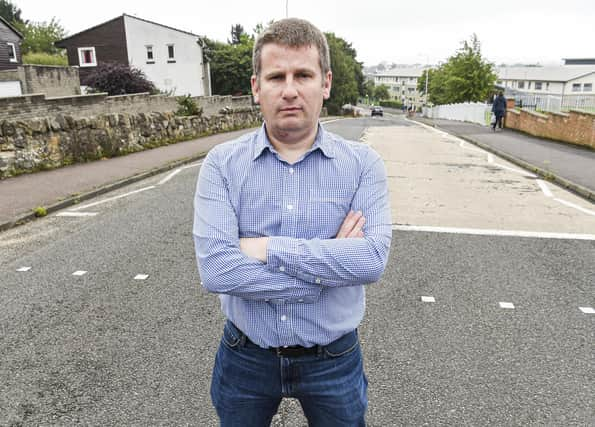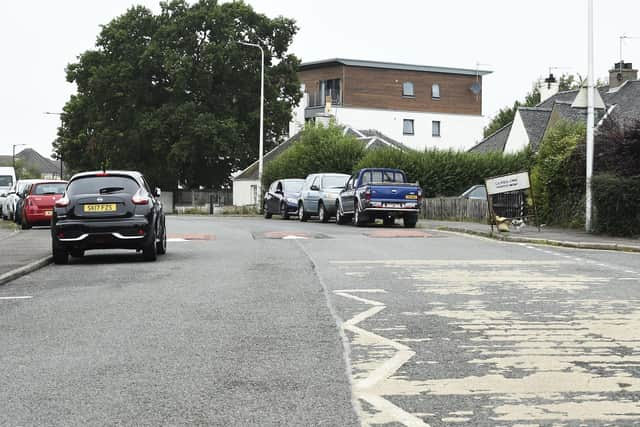Legal battle looms over 'low traffic neighbourhood' bid


The development brings fresh hope to residents in the area that the planned implementation may be postponed whilst the council seeks legal advice.
Local activists raised thousands of pounds to seek legal counsel from an advocate who wishes to remain anonymous.
Advertisement
Hide AdAdvertisement
Hide AdIn an excerpt, the advice states: “It is difficult to escape the conclusion that City of Edinburgh Council has used the pandemic as a pretext to introduce a change that it might otherwise have found difficult to implement if it had had to follow the procedure for making a Temporary Traffic Regulation Order.”


The issue regarding legality focuses on the use of a TTRO that has allowed the council to implement emergency measures and whether or not the reasoning behind this is justifiable.
The advocate compares the more subtle measures such as placing cones along roads to extend pathways on George IV bridge as what could be considered a more appropriate move.
But the changes in East Craigs are far more intrusive and the legal advice supports' claims that residents should have a say on whether bus gates and road blocks are introduced under the procedures.
Advertisement
Hide AdAdvertisement
Hide AdLocals have also cast doubt on the argument that the changes will bring about a safer environment with less risks after Spaces for People own ‘People Project Priority Scores’ gave a two out of ten for “Distancing and Risk Mitigation” - joint lowest out of all of the emergency power proposals in the capital.
But the council argues that the overall score matrix improves safety in other elements - most notably for cyclists, who see an eight out of ten improvement in accessibility.
David Hunter, an organiser of Keep Edinburgh Moving and local resident, said: “It is a really sad state of affairs when a large group of residents become so ignored, frustrated and disenfranchised by their only local representatives, that we felt we had to club together to pay for an advocate to undertake a legal review of the council’s process. Such is the lack of trust, and refusal to listen, that’s what we had to do. Hundreds of local residents put their hands in their pockets at what is a difficult time economically, because they have completely lost trust in this council administration – not a good look.
“The council has claimed that 1,200 people supporting its 2030 Vision consultation represents a wide-ranging mandate for change – even though that’s barely one in 500 city residents. Yet we have a petition signed by 2,650 local residents in a tiny corner of the city, and the council won’t recognise that as a mandate for stopping this hated Low Traffic Neighbourhood.”
Advertisement
Hide AdAdvertisement
Hide AdFurther doubt was cast on the temporary nature of the scheme after council leader Adam McVey appeared to suggest that the proposals were put through under emergency powers as part of a long term plan for the area.
Cllr Mcvey said that plans were put through “under the guise of Spaces for People” and that they had been “long standing aspirations” of the local authority in a Policy and Sustainability meeting in August.
The residents’ legal counsel also said that, in 2017, the council established a need for a Low Transport Neighbourhood (LTN) in the area and had carried out public discussions and technical surveys since then.
The advocate added that the actions of the council “gives rise to a suspicion that the pandemic is being used as a pretext” to make a decision that could well have been rejected if it had gone through the proper channels.
Advertisement
Hide AdAdvertisement
Hide AdThe expert also believes the council may be implementing the change with a view to “changing the status-quo” and therefore “making permanent change more likely.”
The council has reiterated that the LTN’s are temporary and that any permanent move will be preceded by a consultation with local stakeholders and residents.
But campaigners insist that as a result of the council’s actions they have had to organise a fundraiser to pay for a variety measures to protest the proposals.
So far the group has raised more £6,000 in around three weeks of the fundraising page being set up.
Advertisement
Hide AdAdvertisement
Hide AdThe council’s,transport and environment convene,r Cllr Lesley Macinnes said: “In taking forward the LTN, we’ve followed the Committee agreed process for engagement via notification to ward councillors, community councils and stakeholder groups. To aid transparency and clarity on the project for the local community, this was followed up with a letter to every resident and, most recently, the decision to bring proposals to Transport and Environment Committee for full discussion.
“As we have previously stated, this is a temporary scheme which has been informed by data and feedback gathered as part of work on a permanent project. There is a clear dividing line between these Spaces for People measures and any long-term permanent changes which may emerge, as we have told the community, local politicians and the press before.”
An Edinburgh City Council spokeswoman added: “We have made it really clear from the outset that these are emergency measures designed to protect public safety as we deal with the impact of COVID-19. An advantage of their temporary nature is that we can monitor their impact and effectiveness, tweaking and changing elements of the design if necessary.
“Of course we have listened to people’s concerns, and as such we have made amendments to the final scheme based on their feedback, which was discussed at the last Transport and Environment Committee.”